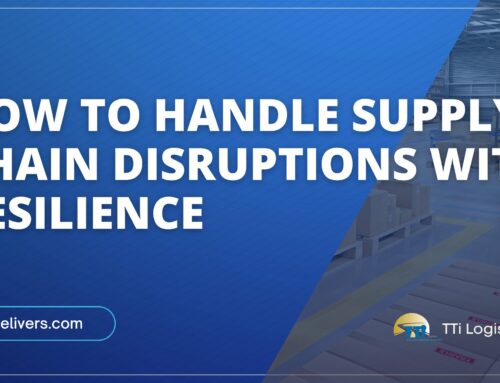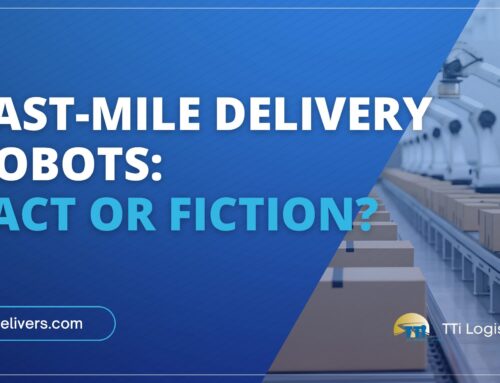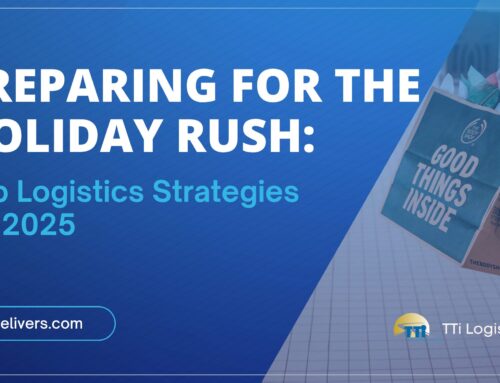Third-party logistics (3PL) providers play a crucial role in the supply chain by managing a variety of logistics functions on behalf of their clients. From warehousing and transportation to order fulfillment and distribution, 3PLs are essential for companies looking to optimize their operations and focus on their core competencies. However, as the logistics landscape continues to evolve, understanding the challenges faced by these providers has never been more important.
With the year-end logistics reviews approaching, many companies are reflecting on their logistics strategies and searching for ways to improve. This blog post identifies and analyzes the top five challenges faced by third-party logistics providers, from operational inefficiencies to rising customer expectations, and explores effective strategies to overcome them.
Challenge 1: Operational Inefficiencies
Understanding Operational Inefficiencies
Operational inefficiencies can manifest in various forms, including delays in processing orders, errors in inventory management, and slow communication among team members. These inefficiencies can arise from outdated technology, inadequate training, and a lack of streamlined processes. For 3PL providers, the consequences of operational inefficiencies are significant, often leading to increased costs and reduced customer satisfaction.
Common Causes
- Outdated Technology: Many 3PL providers rely on legacy systems that can hinder their ability to respond quickly to changes in demand or operational challenges.
- Poor Communication: Ineffective communication between departments, clients, and suppliers can lead to misunderstandings and delays in service delivery.
- Inadequate Training: Without proper training, staff may struggle to utilize available technology effectively or follow established processes.
Impact on Service Quality and Profitability
Operational inefficiencies can lead to errors in order fulfillment, resulting in missed deadlines and dissatisfied customers. This not only affects customer retention but can also damage a provider’s reputation in the marketplace, ultimately impacting profitability.
Strategies to Overcome Inefficiencies
- Automation: Implementing automated systems for order processing, inventory management, and communication can significantly reduce errors and improve efficiency.
- Better Communication Tools: Utilizing advanced communication platforms and project management tools can help streamline interactions among team members and external partners.
- Continuous Training: Regular training sessions and workshops can ensure that staff are up-to-date on best practices and the latest technologies.
Challenge 2: Rising Customer Expectations
Overview of Changing Customer Demands
In today’s fast-paced digital world, customer expectations are at an all-time high. E-commerce growth has led consumers to expect rapid delivery times, accuracy in order fulfillment, and transparency throughout the shipping process. As a result, 3PL providers must adapt quickly to meet these rising expectations.
Impact of E-Commerce on Service Expectations
The rise of e-commerce has fundamentally changed consumer behavior. Customers now expect:
- Same-day or next-day delivery options
- Real-time tracking of their orders
- Accurate inventory availability information
Strategies for Meeting and Exceeding Expectations
- Personalization: Tailoring services to meet individual customer needs can enhance satisfaction and loyalty. Offering customized delivery options or packaging can create a positive experience.
- Transparency: Providing customers with real-time updates on their orders and shipment status can build trust and improve satisfaction.
- Investing in Technology: Utilizing advanced technologies such as AI and machine learning can help predict customer demand and optimize inventory management.
Challenge 3: Supply Chain Disruptions
Common Causes of Disruptions
Supply chain disruptions can arise from various factors, including natural disasters, geopolitical events, and unexpected demand fluctuations. These disruptions can lead to significant delays in logistics operations and affect delivery timelines.
Effects on Logistics Operations
When supply chain disruptions occur, 3PL providers may struggle to maintain service levels, leading to delays in shipments and increased costs. In some cases, providers may need to find alternative suppliers or transportation routes, further complicating their operations.
Strategies for Mitigating Disruptions
- Diversifying Suppliers: Establishing relationships with multiple suppliers can help mitigate risks associated with relying on a single source.
- Contingency Planning: Developing and regularly updating contingency plans can prepare logistics providers for various disruption scenarios.
- Real-Time Monitoring: Utilizing IoT and advanced analytics can enable providers to monitor their supply chains in real-time, allowing them to respond quickly to emerging issues.
Challenge 4: Regulatory Compliance
Overview of Regulations Affecting the Logistics Industry
The logistics industry is subject to a variety of regulations related to safety, environmental standards, and labor practices. Navigating these regulations can be challenging, especially for 3PL providers operating in multiple jurisdictions.
Challenges of Keeping Up with Changing Regulations
Regulatory compliance is a moving target, as laws and regulations can change frequently. For 3PL providers, staying informed and ensuring compliance can require significant resources and ongoing training.
Strategies for Ensuring Compliance
- Training Programs: Implementing regular training sessions for employees on compliance issues can help ensure that everyone is aware of the latest regulations.
- Technology Solutions: Utilizing compliance management software can help automate tracking and reporting, making it easier to maintain compliance.
- Consulting Experts: Engaging with legal and compliance experts can provide valuable insights and guidance on navigating complex regulatory landscapes.
Challenge 5: Cost Management
Explanation of Rising Operational Costs
Rising operational costs pose a significant challenge for 3PL providers. Factors such as fuel price volatility, labor shortages, and increasing customer demands can contribute to these rising costs.
Factors Contributing to Increased Costs
- Fuel Prices: Fluctuations in fuel prices can dramatically impact transportation costs, making it difficult for providers to maintain profitability.
- Labor Shortages: Finding qualified workers in the logistics industry has become increasingly challenging, leading to higher wages and increased training costs.
- Technology Investments: While technology can improve efficiency, the initial investment can be substantial, posing a financial challenge for some providers.
Strategies for Effective Cost Management
- Route Optimization: Utilizing advanced route optimization software can help reduce transportation costs by identifying the most efficient routes.
- Technology Investments: Investing in automation and advanced technologies can lead to long-term savings and improved efficiency.
- Supplier Negotiations: Building strong relationships with suppliers and negotiating better terms can help mitigate rising costs.
Strategic Insights for Success in 3PL
As the logistics landscape continues to evolve, third-party logistics providers must navigate a variety of challenges to remain competitive and successful. By understanding and addressing the top challenges—operational inefficiencies, rising customer expectations, supply chain disruptions, regulatory compliance, and cost management—3PL providers can position themselves for long-term success.
Investing in technology, enhancing training programs, and developing robust strategies for risk management are essential steps that logistics providers can take to overcome these challenges and deliver exceptional service to their clients. In an ever-changing industry, adaptability and innovation will be key to thriving in the future.







